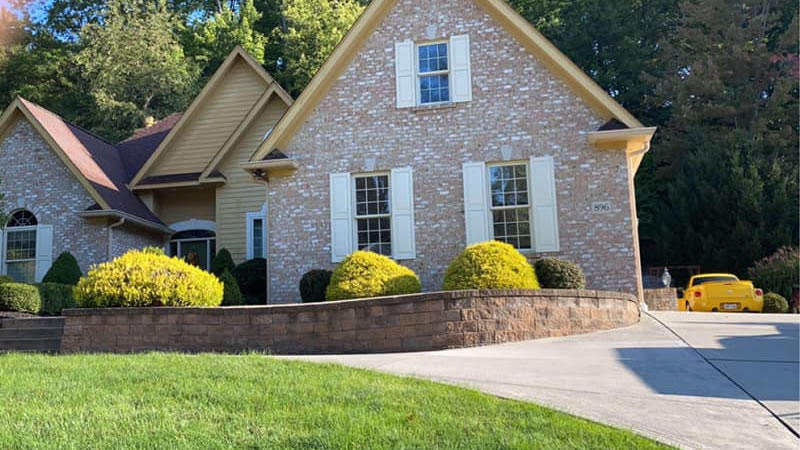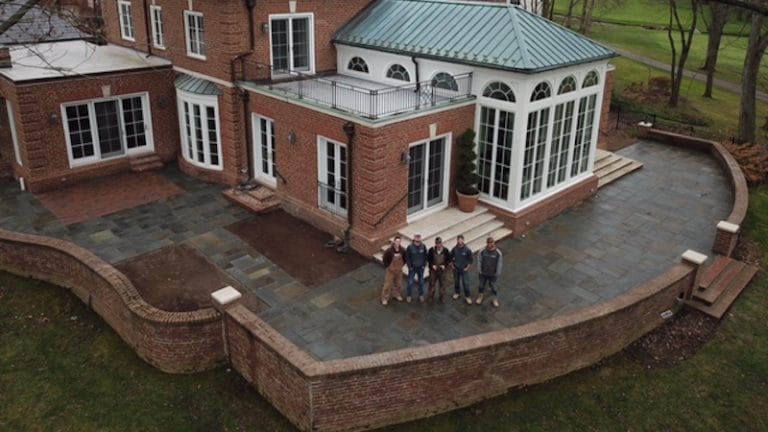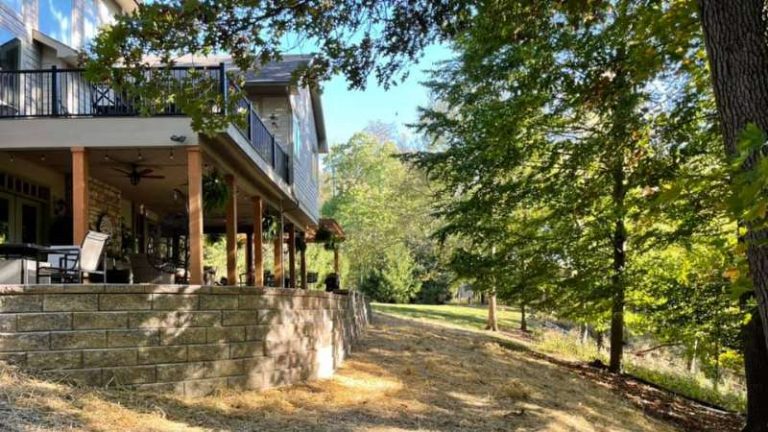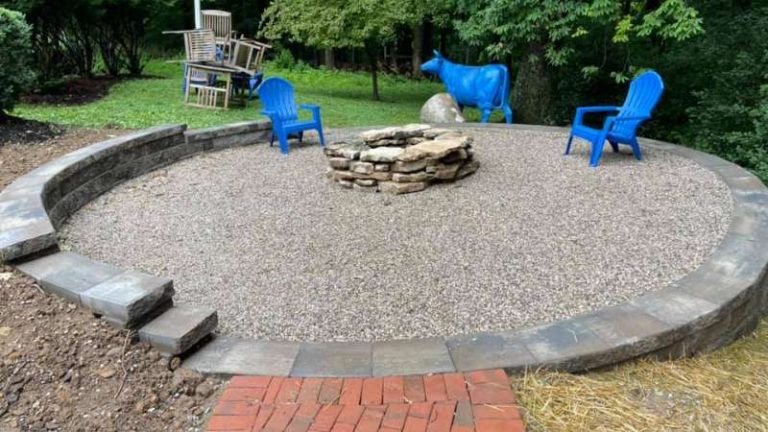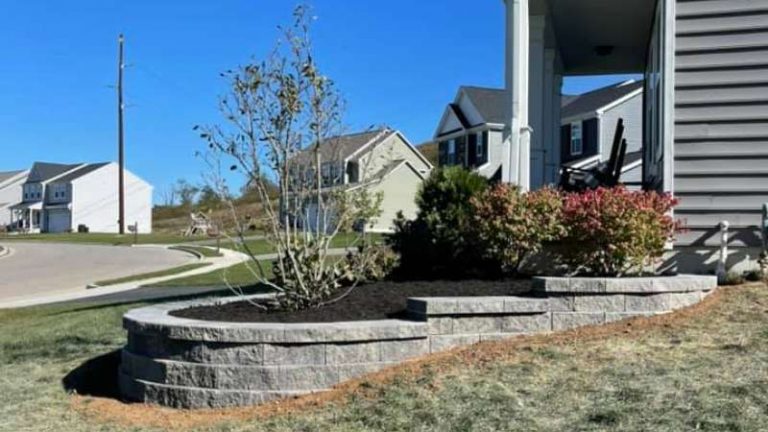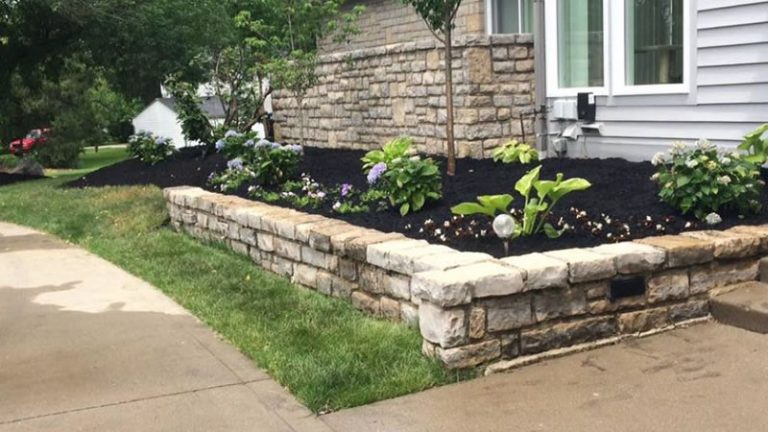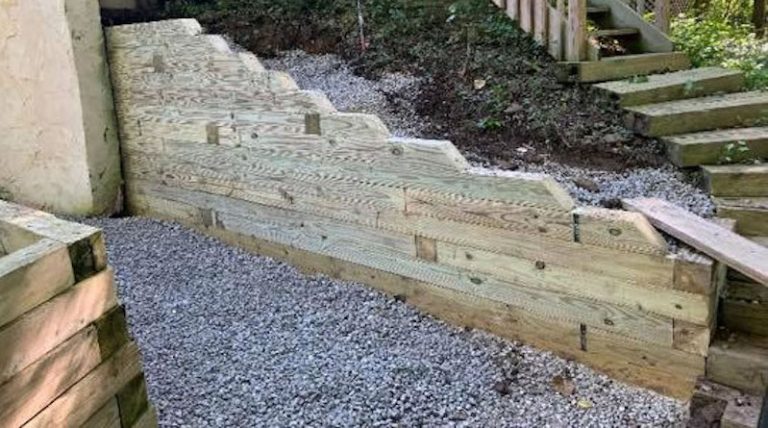Why Do Retaining Walls Fail?
Why Do Retaining Walls Fail?
Mention the word retaining wall to a homeowner and you’ll get mixed reactions. Responses will range from a laid back, “they aren’t big deals” to “whoa, that was an ordeal.” A little digging makes it very clear as to who has actually had to install or deal with a true retaining wall and who has confused a landscape aesthetic with a working retaining wall.
The confusion comes from the varying sizes of what is defined as a retaining wall. Many homeowners build raised flower beds out of more hefty hardscape elements like stone and call it a wall. While it is true that this “wall” is supporting the soil inside, a true retaining wall is holding more than added soil. It’s an actual wall constructed with a purpose. Without it, the surrounding soil and vegetation make buildings, landscaping, or usability unmanageable.
Another influencing factor for varying opinions on retaining walls is the execution. A meticulously planned and carefully constructed wall will last a very long time. In contrast, a poorly organized plan and shoddy composition will result in an unstable structure and, inevitably, full-blown failure.
SIGNS OF RETAINING WALL FAILURE
When a retaining wall is deemed to have failed, the designation typically refers to evidence of failure rather than full-blown disintegration or collapse. Usually, there are clear indications that the wall is failing before it fails completely. When homeowners know what signs to look for, they have a much better chance of saving the wall through proper repair. The earlier you detect the signs, the better the chances of preventing total failure.
Here are the three most common signs that your retaining wall is subject to failure:
- Leaning
- Cracking
- Bowing/Bulging
WHAT CAUSES A RETAINING WALL TO FAIL?
Retaining walls work much harder than freestanding landscape walls designed to define an area, add visual interest, or create privacy. In addition to holding their own weight, they must withstand the lateral pressure of retaining soil. Depending on the type of soil and the environment surrounding the soil, the load can be compounded by moisture saturation. Not to mention a wall built for buildings or vehicle storage. If these additional loads (called surcharges) are not taken into consideration during planning, there will be a higher risk of failure. However, those aren’t the only causes contributing to a failed retaining wall.
Once you see a indication of failure, it’s important to identify the cause. Below are a few of the most common reasons retaining walls fail.
Inadequate Drainage
Saturated soil is one of the biggest issues for retaining walls. Wet soil is dramatically heavier than dry soil. If the backfill becomes saturated with water due to poor drainage, the hydrostatic pressure will strain the wall — especially when it was not designed for that high of a load.
To avoid surface water infiltrating the backfill, the area can be regraded to direct water away from the wall. Drainage can be improved by adding landscape materials such as crushed rock and pea gravel (particularly when the backfill is a poor quality fill like clay, which swells). Another solution is to hire a professional to drill additional weep holes in the wall to increase the surface drainage although this may only be a band-aid and not a permanent solution to your problem.
Unexpected Loads
When a landscaper is designing a retaining wall, communication is key. The homeowner’s plans for using the retained area greatly influence the design. Parked cars or outbuildings sitting atop of the area held back by the wall need to be taken into account to avoid leaning, toppling, or collapse from the extra load. A breakdown in communication could result in a breakdown of the retaining wall. Sometimes, however, it’s not a change of plans that thwarts the wall’s success, but a change in ownership. If the new homeowner isn’t aware of the original intentions of the design, they could inadvertently put undue pressure on the wall. Mother nature can also add to the anticipated retained load if the slope backfill is steeper than expected or the wind puts added pressure on the wall.
Transferring some of the load force to the base of the wall by extending the footing, widening the base, or installing anchors/tiebacks will give the wall extra strength.
Unstable Foundation
A solid footing is instrumental in constructing a long-lasting, reliable retaining wall. A site investigation should be done to avoid problems relating to the type of terrain, climate, and soil properties. These factors will help determine the proper depth the footing needs to be and whether or not it needs to start below the frost line. The soil beneath the wall must be compacted to establish a strong base from which to build and mitigate any settling issues that may affect the integrity of the wall.
To address an inadequate foundation, a professional can advise you whether the footing at the base of the wall needs to be extended or made deeper, the wall’s height reduced and the backfill regraded, or all of the above.
Shoddy Construction
Cheap materials and construction shortcuts are sure-fire ways to increase the likelihood of retaining wall failure. Exploitive or inexperienced contractors can bring poor construction practices to the worksite. Unfortunately, it’s the homeowner that pays the price down the road. Not using geo-grid, improper reinforcement, and insufficient amounts of drainage materials are just a few examples of shortcuts with major repercussions.
Oftentimes, the options for repairing a thrown together retaining wall involve extensive excavation or, even, completely rebuilding the wall. Make sure to do your research and find a professional with extensive knowledge, a great deal of experience, and a well-rounded list of referrals. At Natural Image Property Services we specialize in building retaining walls out of a variety of high quality materials designed specifically for your property.
A Shift in Slope
If the gradient of the backfill changes, it can put unexpected stress on the retaining wall. Pooling water, leaning or curved tree trunks, and unlevel outbuildings are often indications that there has been a change in slope dynamics. Calling on a professional to inspect the situation at the first indication of failure could mean the difference between a relatively minor repair and catastrophic damage.
Advanced Age
Whether it’s seismic shifts, changes in the amount of drainage, increased load expectations, or simply the degradation of construction materials, the passage of time can take a toll on even the best built retaining walls. Regular inspection and maintenance will help ensure minimal repairs are needed if the wall ever starts to show signs of failure.
REPAIRING A FAILED RETAINING WALL
There are many factors to consider when it comes to fixing a failing retaining wall. Whether the choice is to repair the existing structure or to demolish and start from scratch, calling a professional is the best place to start. If they determine that the wall can be saved, they may recommend one of the following courses of action:
- Anchoring the walls
- Extending the footing
- Replacing the backfill
- Correcting drainage issues
- Reducing the height
Having an experienced retaining wall contractor evaluate the situation as is will allow them to assess what went wrong and tackle the issues head-on.
Do you have retaining wall that is failing on your property? Natural Image Property Services might be able to help! If you have a retaining wall that is failing and you want to have it looked at by a professional please reach out by calling (740) 403-8063 or filling out our online contact form and we’d be happy to schedule a consultation with you.

